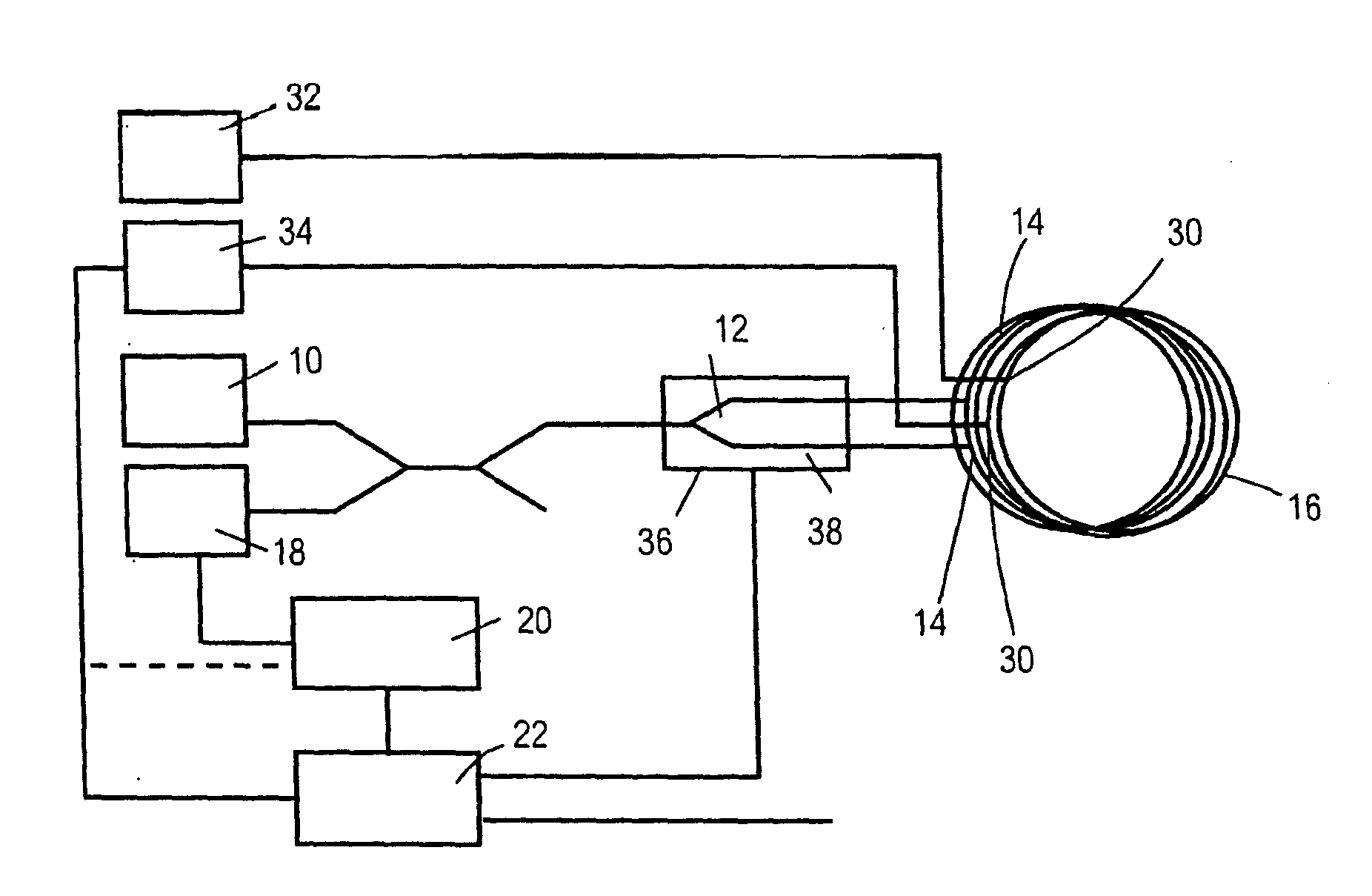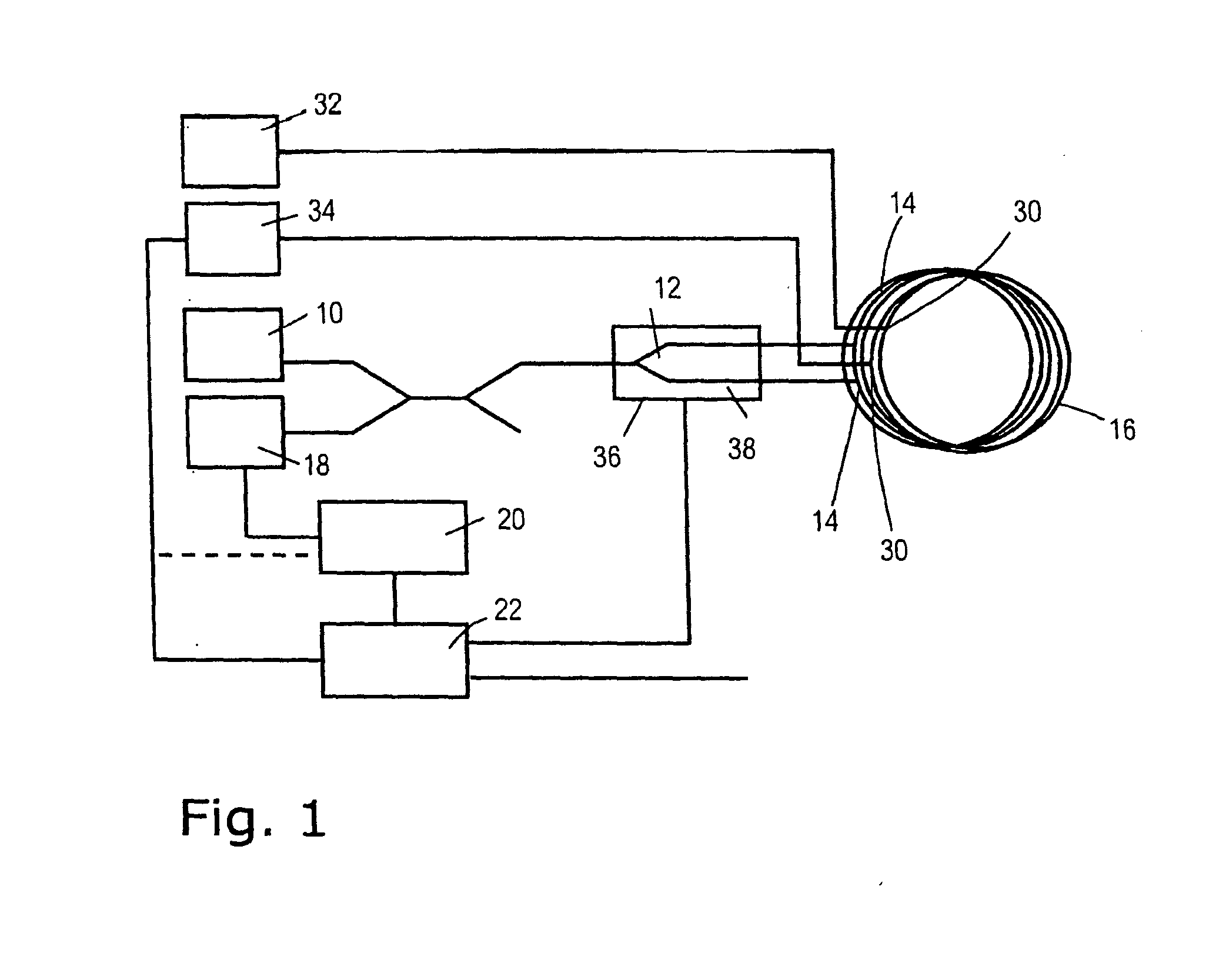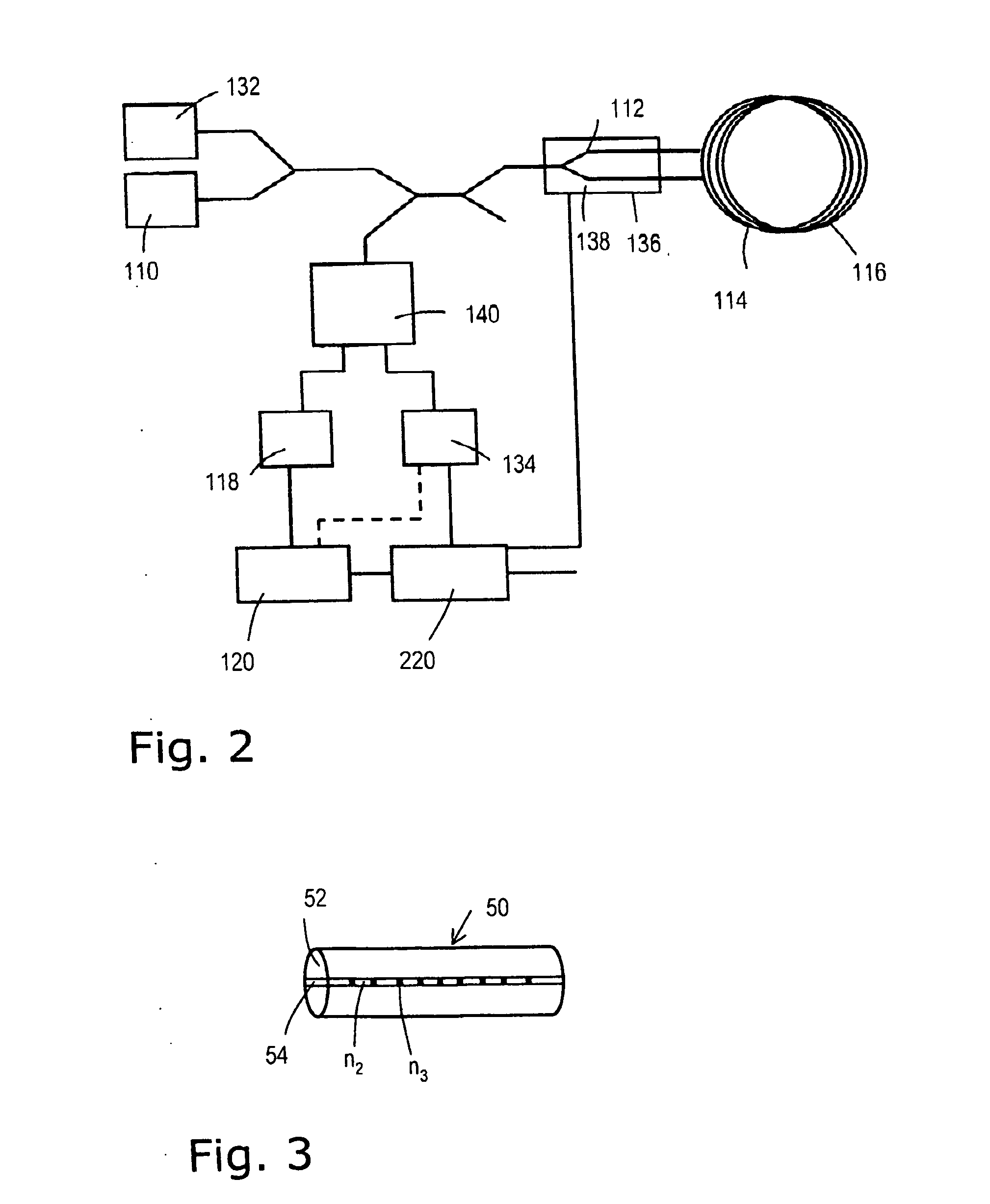Fiber optic interferometer and method for determining physical state parameters in the interior of a fiber coil of a fiber optic interferometer
a fiber optic interferometer and interior technology, applied in the direction of speed measurement using gyroscopic effects, instruments, surveying and navigation, etc., can solve the problems of not being able to directly measure the instantaneous state at the interior of the optical fiber, and not being able to produce the same propagation time of light beams,
- Summary
- Abstract
- Description
- Claims
- Application Information
AI Technical Summary
Benefits of technology
Problems solved by technology
Method used
Image
Examples
Embodiment Construction
[0016]FIG. 1 is a schematic diagram of a first embodiment of a fiber optic interferometer in accordance with the invention. The fiber optic interferometer of FIG. 1 is a so-called Sagnac interferometer for determining a rotational speed acting on the arrangement. It has a first light source 10, the output beam of which is directed to a coupler 12 that can act as a beam splitter as well as a coupler depending on the direction of the light beam. In the coupler 12, the light beam coming from the first light source 10 is split into two partial light beams that are radiated in opposite directions into an optical fiber 14. The optical fiber 14 is wound on a carrier (not illustrated) to form a fiber coil 16. After passing through the optical fiber 14, the two partial light beams propagating in opposite directions are combined to form a light beam in the coupler 12. The light beam produced by superimposition of the two partial light beams is directed to a first photodetector 18, the output ...
PUM
 Login to View More
Login to View More Abstract
Description
Claims
Application Information
 Login to View More
Login to View More - R&D
- Intellectual Property
- Life Sciences
- Materials
- Tech Scout
- Unparalleled Data Quality
- Higher Quality Content
- 60% Fewer Hallucinations
Browse by: Latest US Patents, China's latest patents, Technical Efficacy Thesaurus, Application Domain, Technology Topic, Popular Technical Reports.
© 2025 PatSnap. All rights reserved.Legal|Privacy policy|Modern Slavery Act Transparency Statement|Sitemap|About US| Contact US: help@patsnap.com



